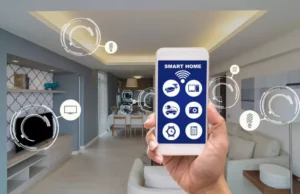Smart devices have become an integral part of modern life. They simplify life, connect people, and automate various tasks at home, in the office, and in personal life. These devices, such as smartphones, tablets, smart home systems, wearables, and IoT (Internet of Things) devices, allow us to quickly access news, entertainment, and communications, enhancing our daily lives. However, the increasing popularity of smart devices also brings increased security risks. Hackers are constantly searching for vulnerabilities in internet-connected devices to steal personal information, hack systems without permission, and even disrupt normal operations in homes and businesses. To protect your privacy, personal information, and cybersecurity, you need to know how to secure your smart devices.
Understanding the Risks of Smart Device Hacking
Cybercriminals can hack smart devices that store sensitive information and are connected to the internet, making them easy targets. Hackers can compromise devices using weak passwords, outdated software, insecure Wi-Fi networks, or malicious applications. When a device is compromised, attackers can use it to steal financial information, read emails and private data, monitor user activity, and even control other connected devices. Such security breaches can have grave consequences, such as identity theft, financial loss, and privacy violations. Understanding these risks is the first step in ensuring your security measures are effective.
Use strong passwords
Smart devices need passwords to protect themselves. A common mistake many people make is using the same, simple, or repetitive passwords for multiple accounts. This procedure makes it easy for hackers to hack your devices. To protect your smart devices, always use strong passwords that consist of numbers, uppercase and lowercase letters, and special characters. Don’t reveal easily guessed personal information, such as dates or names. Password managers can help you create strong passwords for all your devices and accounts and store them securely. The process ensures security without being difficult to manage.
Enabling Multi-Factor Authentication
Multi-factor authentication (MFA) makes your smart devices more secure. Even if someone gets your password, MFA requires additional verification steps, such as a verification code sent to your phone, an email confirmation, or biometric authentication (such as a fingerprint or face scan). By enabling MFA on your phone, email accounts, smart home systems, and other connected devices, you significantly reduce the risk of unauthorised access to your devices. MFA adds a second line of defence against hackers, making it much harder for them to hack your devices.
Keep your Apps and Software Up to Date
When the software and applications on smart devices become outdated, they become vulnerable to security attacks. Hackers often exploit known vulnerabilities in older operating systems or applications to compromise them. Regularly updating your devices, apps, and firmware ensures that security patches are applied and all potential vulnerabilities are fixed. Many smart devices can be updated automatically; you should do this to ensure you always have the latest security measures. Updating your software is a simple and effective way to prevent hackers from exploiting outdated systems.
Secure your network.
A secure network should protect smart devices at home or in the office. Hackers can easily compromise connected devices through insecure Wi-Fi networks. Set strong and unique passwords for your Wi-Fi and router, enable WPA3 encryption (if available), and ensure your router settings are updated regularly to ensure network security. Avoid using public Wi-Fi networks when you need to access private accounts or data. Consider using a Virtual Private Network (VPN) to protect your internet connection. A secure network minimises the risk of hackers compromising your smart devices and causing damage.




